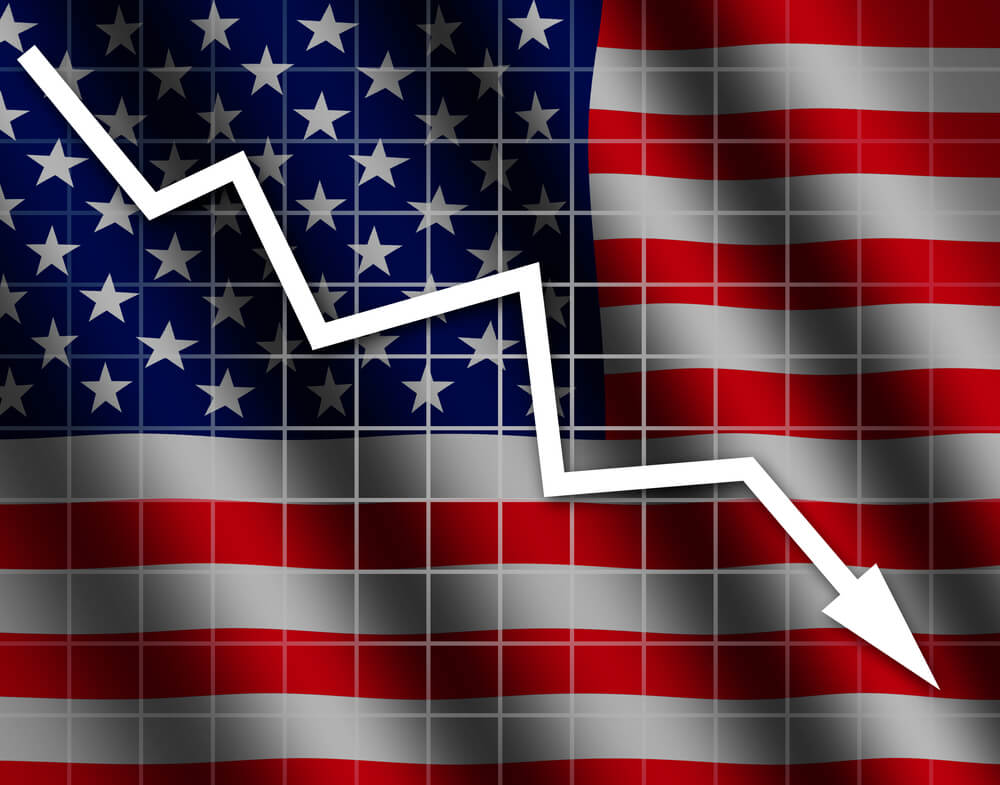The threat of default looms over the United States: the collapse of the economy may occur this fall
It looks like Congress will reach an agreement on an increase in the federal borrowing limit before the government runs out of money to pay bills in the coming months. The limit was suspended in 2019 and automatically reinstated earlier this month. Senior Republicans in the Senate, who disapprove of US President Joe Biden's spending program, said the GOP could oppose any attempts to raise the limit this year. Writes about it The Wall Street Journal.

Photo: Shutterstock
What is the debt limit
Congress limits the amount of money the government can borrow, and once the limit is reached, legislators must raise or suspend it before the Treasury Department can issue additional bonds.
Before World War I, Congress approved borrowing for specific purposes, but over the next two decades it gave the Treasury more flexibility to issue bonds without separate, clear legislation. By 1939, Congress had effectively set an aggregate limit that delegated the Treasury the ability to borrow up to a certain amount. According to the Congressional Research Service, the limit has been raised or changed 98 times.
Why is the limit on the news again?
In July 2019, Congress voted to suspend the debt limit until July 31, 2021, after which the previous $ 22 trillion limit will be changed to include any new borrowing in interim years. The limit was restored on August 1 at about $ 28,5 trillion, and this figure includes debt owned by the public and government debt. Thereafter, the Treasury will no longer be able to use bond markets to raise new funds.
On the subject: The US Central Bank is Run by Private Individuals: How America's Whole Economy ended up in the hands of a wealthy group
Treasury chief Janet Yellen said the department will begin using emergency measures to save money so the government can continue to pay its obligations to bondholders, social security recipients, veterans and others. Once these measures are over, the Treasury will begin to pass payments on its obligations, which could provoke a default on the US debt.
How much time lawmakers have to act
Yellen said the government could exhaust these extraordinary measures, such as buying back certain investments in federal retirement programs and suspending new investments in those programs to raise funds, before lawmakers return to Washington from summer break in mid-September.
Analysts at the Bipartisan Policy Center, a Washington think tank, believe the Treasury could run out of money in the fall, but likely not before the end of the fiscal year, which is Sept. 30. The Congressional Budget Office said this in July - the named X date could fall in October or November.
The pandemic has made these estimates much less certain and less accurate than before. The huge amounts of spending that Congress has authorized to protect the economy from the impact of the COVID-19 pandemic and the unpredictable nature of the recovery have made it difficult to assess how much money is going into and out of the Treasury every day.
While attempts to save money usually last for several months, Yellen said they could end much earlier this time.
You may be interested in: top New York news, stories of our immigrants and helpful tips about life in the Big Apple - read it all on ForumDaily New York
What happens if the debt limit is not raised
If the government cannot take out a loan to pay bills, it will have to suspend certain pension payments, withhold or cut salaries for soldiers and federal employees, or delay interest payments, which would constitute a default.
In 2011, Standard & Poor's first stripped the US of an 'A' credit rating after the Treasury failed to pay certain benefits for several days.
“Failure to increase the debt limit would have disastrous economic consequences and could trigger a financial crisis,” Yellen said.
In 2011, then-Treasury chief Timothy Geithner warned that a default would spike the cost of borrowing for individuals, businesses, state and local governments, fraught with widespread job losses and a deeper recession than the 2008 financial crisis.
Does the increase in the limit allow new expenses?
No, voting to raise the debt limit does not authorize new spending, but essentially allows the Treasury to raise money to pay for spending that the government has already authorized. About one-third of federal spending is discretionary, which Congress approves in annual appropriations bills. The rest is automatic spending on programs such as Medicare, Medicaid and Social Security.
Read also on ForumDaily:
Biden presented a 21-point immigration program: what's in it
How does the pension system in the US
Ten cheapest states in America to live in 2021
The rise in prices in June broke a record in 13 years: what has risen in price the most
Subscribe to ForumDaily on Google NewsDo you want more important and interesting news about life in the USA and immigration to America? — support us donate! Also subscribe to our page Facebook. Select the “Priority in display” option and read us first. Also, don't forget to subscribe to our РєР ° РЅР ° Р »РІ Telegram and Instagram- there is a lot of interesting things there. And join thousands of readers ForumDaily New York — there you will find a lot of interesting and positive information about life in the metropolis.











